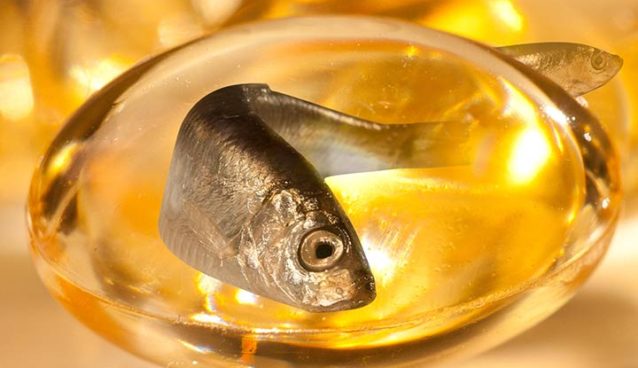Omega 3.

If you compare mental health records from Japan with those from nearly all other developed countries, you’ll come across a glaring distinction – Japan has one of the lowest rates of bipolar disorder in the civilized world; and the lowest among high-income countries.
The lifetime incidence of bipolar in Japan is .07%, a fraction of that in the United States (the US has the highest lifetime rate of bipolar in the world: 4.4%). In fact, high-income countries have the highest rates of bipolar disorder overall – with the notable exception of Japan.
The question is, why? When examining the lifestyle differences between Japan and other high-income countries, Japan doesn’t earn stellar marks on stress and work-life balance. Japanese typically work long hours and the country’s corporate culture puts severe pressure on employees to perform at a high level; in these ways, Japan is very similar to the US and other developed nations, and might even be a little worse in a few categories.
The big difference is diet. The average Japanese person consumes more than 154 pounds of fish annually (or about a half pound a day). Collectively, they consume 12% of the world’s fish, but account for only 2% of the global population. Comparatively, the average American consumes about 16 pounds of fish and shellfish annually.
The result of consuming so much fish is that the average Japanese person has far higher levels of Omega-3 fatty acids in their brains than the average American (or average anyone-else, with the possible exception of the Chinese, who annually consume closer to Japanese levels of fish).
In theory, eating a lot of fish, or taking fish oil supplements—rich in the essential fatty acids the brain requires—can possibly correct this nutritional deficiency and improve mental health. Studies suggest that this benefit extends beyond bipolar disorder and may also improve depression and attention deficit disorder.
The economic outcome of these research findings is that fish oil has become one of the biggest sellers on vitamin store shelves. Americans spend about $15 billion a year on fish oil supplements (along with other supplements that allegedly improve mental health, like St. John’s Wort).
Fish Oil: A Novel Anti-Inflammatory Mechanism
Molecules with important roles in inflammation include proinflammatory leukotrienes and prostaglandins. These are produced from conversion of the omega-6 fatty acid arachidonic acid (AA), via the enzymes cyclooxygenase (COX) and lipoxygenase. In contrast, it has long been known that omega-3 fatty acids enriched in fish oils have beneficial anti-inflammatory properties. Similar to AA, the omega-3 fatty acids eicosapentanoic acid (EPA) and docosahexanoic acid (DHA) are substrates for COX and lipoxygenase. Therefore, it has been proposed that EPA and DHA may suppress the pro-inflammatory activities of AA and its metabolites via both competition for the same enzymatic pathway, and the induction of products with lesser inflammatory activity. One EPA derivative termed Resolvin E1 (RvE1) has received recent attention, and the discovery of its receptor provides evidence for a novel mechanism underlying its anti-inflammatory activity.
RvE1 was first described in mouse exudates during the resolution phase of inflammation, and is reportedly synthesized in human cells from EPA by a novel transcellular mechanism. In this proposed pathway, EPA is converted to 18R-Hydroxy-EPA by aspirin-suppressed COX-2 in endothelial cells. This precursor is then transferred to adjacent leukocytes where it is transformed into RvE1 in the presence of 5-lipoxygenase. Administration of RvE1 suppresses leukocyte infiltration, and proinflammatory cytokine and chemokine production in models of colitis and peritonitis. A new report by Arita et al. suggests that these anti-inflammatory activities may occur via a mechanism that includes RvE1 binding to the cell surface receptor Chem R23.
Chem R23 is a 7 transmembrane G protein-coupled receptor highly expressed in monocyte-derived antigen-presenting cells (APCs), and to a lesser extent neutrophils and lymphocytes. Radiolabeled RvE1 binds specifically to Chem R23-transfected CHO cells, but not to mock-transfected controls. It stimulates pertussis toxin-sensitive MAP kinase phosphorylation and NFkB inhibition in Chem R23-transfected HEK cells, indicating a necessary activation of the Gi/o subtype of G protein. Administration of RvE1 suppresses both pathogen-induced dendritic cell IL-12 production and trafficking in spleen. The effects on IL-12 production are inhibited by Chem R23 siRNA, providing strong evidence that RvE1 acts through the Chem R23 receptor.
Interestingly, Chem R23 is also a peptide receptor. It binds to the protein Chemerin, a distant member of the Cystatin family and mediator of APC chemoattraction. Competition studies suggest that both RvE1 and Chemerin bind to a similar region of Chem R23, and yet exhibit differences in their effects on cells (Figure 1). G protein activation by Chemerin is approximately 3 fold that of RvE1, while RvE1 is approximately 10 fold more potent in its ability to block TNF-a-induced NFkB inhibition. It also appears that Chemerin acts as an inducer of cell migration, while RvE1 has negative effects on this activity. The mechanisms are unclear, although it has been proposed that G protein-coupled receptors might adopt different conformations depending on the ligand, thus resulting in different signaling properties and activities.
The identification of a specific receptor mediating the anti-inflammatory activities of fish oil-derived omega-3 fatty acids or their derivatives could result in novel therapeutic approaches for the treatment of chronic inflammatory disease.